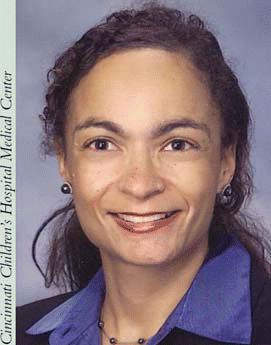Chicago-Consider this: Over the past two decades, data from both the Surveillance, Epidemiology, and End Results (SEER) program and the National Cancer Database indicate that the survival rates for patients with laryngeal cancer have decreased. During this same time period, the use of nonsurgical treatments for these patients has increased. Is there a relationship?
Explore This Issue
July 2006And this: Laryngomalacia is a common, yet still somewhat enigmatic, disease. There are a variety of factors that influence the varying degrees of symptoms and disease severity seen in infants with laryngomalacia. But what do we know about the etiology of the disease and the factors that contribute to the wide spectrum symptoms and outcomes?
While prospective, controlled trials are the gold standard [for evaluating laryngeal cancer treatments], there are clearly some flaws that can be uncovered through review of tumor registries, such as SEER and the National Cancer Database.
Those are just two of the questions addressed in this year’s two Mosher Award-winning theses, which were presented as part of the Triological Society’s program here at the 2006 Combined Otolaryngology Spring Meeting (COSM).
Laryngeal Cancer: Demographics, Patterns of Care, and Survival Rates
The last large study of laryngeal cancer in the United States was published in 1997 and compared management in the early 1980s to management in the early 1990s. Over that same time period, data show that the use of irradiation increased and use of surgery as a single treatment modality decreased. A major impetus for that change arose from Veterans Administration Cancer Study Group findings, first published in 1991, that suggested the treatment of advanced laryngeal cancer with induction chemotherapy followed by radiation allows some patients to preserve their larynx without sacrificing cure rates.
This led some researchers to relate that total laryngectomy was no longer useful in the initial treatment of laryngeal cancer and prompted others to identify that, even if survivals are only equivalent, organ-preservation approaches should be the treatment of choice, said thesis author Henry T. Hoffman, MD, Professor of Otolaryngology-Head and Neck Surgery at the University of Iowa in Iowa City. However, this raises the question as to whether organ preservation approaches provide equivalent survival when offered outside of a controlled study.
While prospective, controlled trials are the gold standard, Dr. Hoffman said, there are clearly some flaws that can be uncovered through review of tumor registries, such as SEER and the National Cancer Database (NCDB).
Mining Tumor Registries
The National Cancer Database accrues 60 percent of its patients from community hospitals, so this is truly a reality check showing what’s going on in the country, Dr. Hoffman said. The SEER data set samples approximately 25 percent of the US and identified statistically significant improvement in survival from the mid 1980s to the mid 1990s for 23 of the 24 cancer sites examined. The single site that showed a decrease across these time periods was the larynx.

Leave a Reply